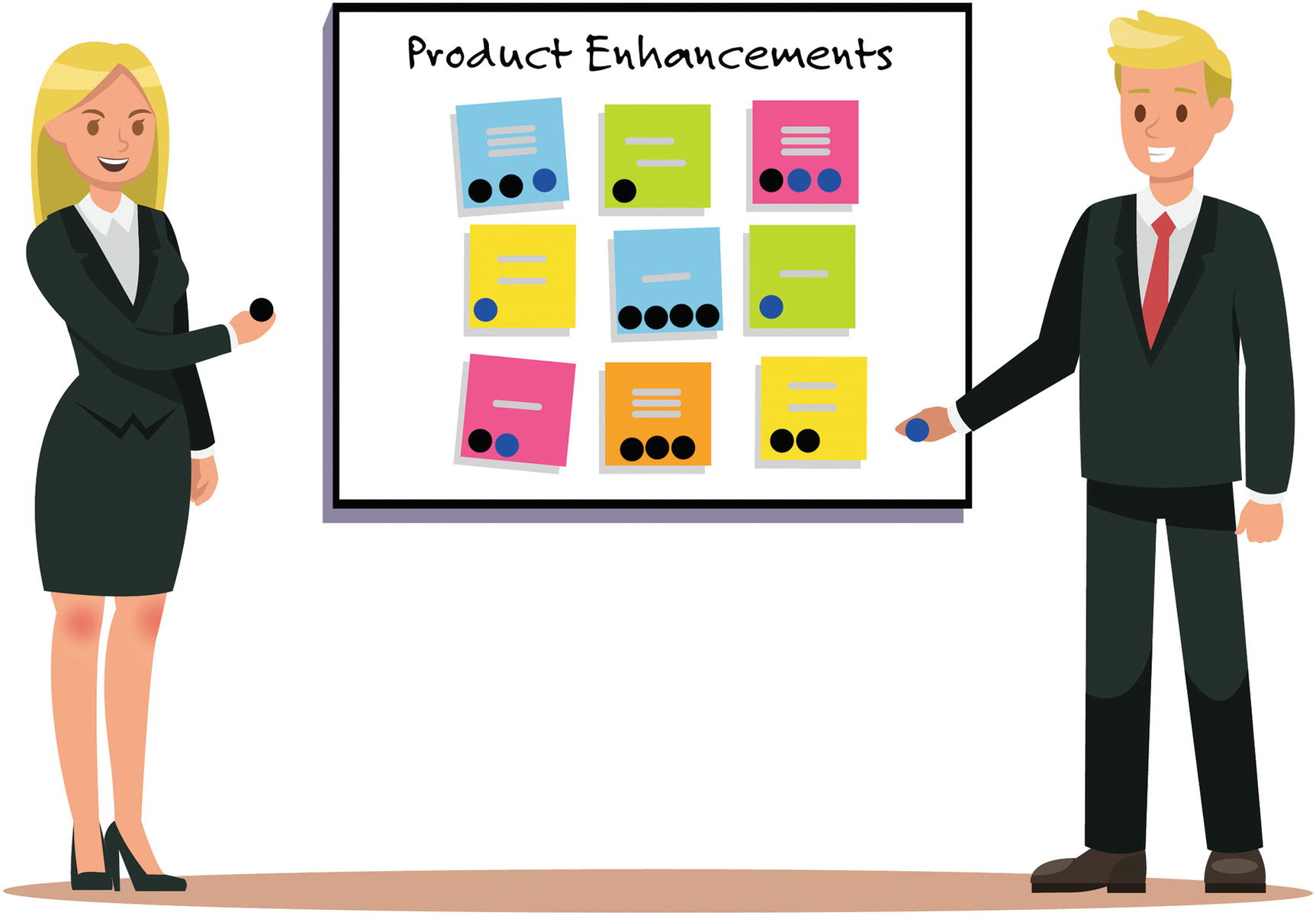Description
Dot Voting is a technique that allows an agile team to quickly select or prioritize items with input from all team members. Each team member is given the same number of dot stickers and instructed to place the stickers near the list of items they wish to select or prioritize. Team members may place as many dots as they wish on any item(s) on the list. Items with the most dots are selected or prioritized based on the number of dots they receive. This technique is frequently used during the sprint retrospective to help prioritize improvements.

Typical Roles
- 1.
Agile Team
- 2.
Scrum Master
- 3.
Product Owner
Desired Behaviors
- 1.
Post the options (e.g., user stories, items, solutions, improvements) on the wall using sticky notes, flip charts, or other visible medium.
- 2.
Explain the goal of the session (e.g., select the best alternative, rank order user stories) and why each vote is important. Discuss the options and answer any questions from participants.
- 3.
Give the same number of dots to each participant. Alternatively, a marker may be used so the team member can record their vote directly on the sticky note or flip chart.
- 4.
Ask the participants to vote by placing their dots. Participants should apply dots under or beside the items they prioritize.
- 5.
Count the votes and announce the items with the highest number of votes. If ranking is required, rank order the items from the most number of dots to the least.
- 6.Briefly discuss the items that were selected or prioritized the highest. If the participants are not in agreement with the voting outcome, take the following action:
- a.
Arrange the votes into three groups to represent high, medium, and low priorities.
- b.
Discuss the items in each group.
- c.
Move items around to create a high-priority list.
- d.
Take a new vote with items in the high-priority list.
- a.
